How To Tell The Difference Between Porter Vs Stout Beers
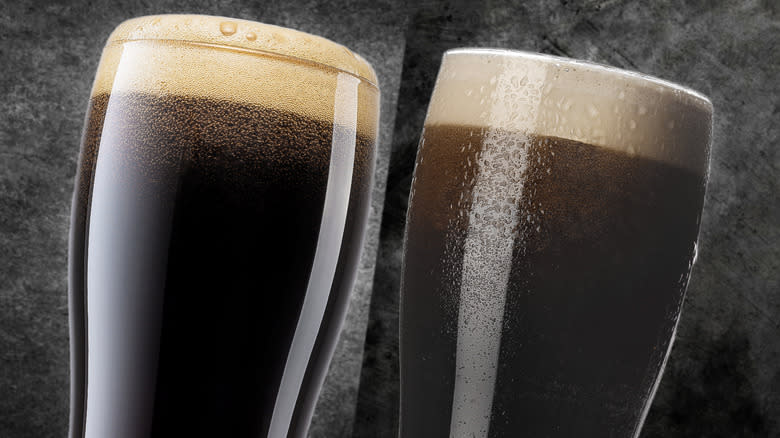
With so many beer styles out there, it's easy to lose track of what's pouring out of the tap. This is especially true of dark beers. Most beer drinkers are able to differentiate a pale ale from a pilsner, but sit a porter and a stout in front of them, and only the most experienced drinkers would likely be able to tell you which is which. While the two classic dark beers may look the same, their different ingredients give them distinct flavors that can help you tell them apart once you know what to look for.
In reality, though, the difference between the two styles is more of an art than a science. While there are certain features and characteristics that can help you identify a porter from a stout, there are many instances in which you could make good arguments for why a particular beer is one or the other. There's simply too much crossover and too few hard-set rules to achieve certainty. In practice, this means breweries are relatively free to identify dark beers in whatever way they like. So long as customers are given a description that isn't wildly out of step with the flavor, there are no repercussions for getting creative with the label — which is to say that there aren't any regulatory boards making sure a stout is a stout and labeled as such. It's not a complete free-for-all, but there is a good amount of wiggle room.
Read more: 15 Popular Hard Seltzer Brands, Ranked Worst To Best
What Is A Porter?
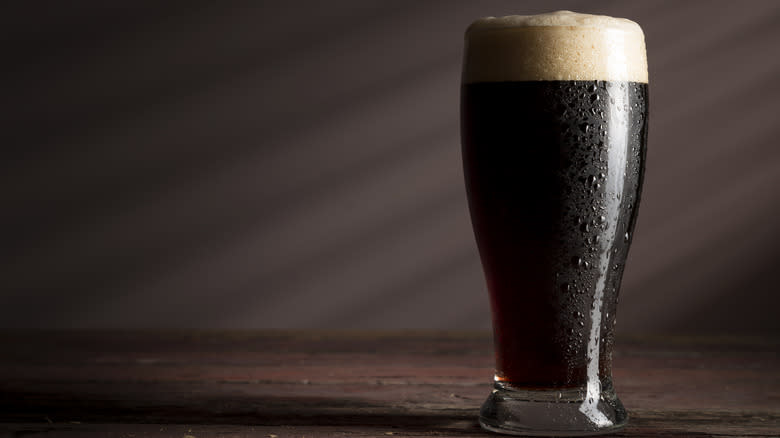
Of the two styles, porters were the first to be invented. They originally got their start in London in the 1700s, where the rich flavors and big body were a popular antidote to the cold winter months. Although we don't know for sure, the name likely comes from the working class porters (such as dock workers) who greatly enjoyed the drink when it was first released. The drink was wildly successful and, before the century was over, there were several breweries shipping porter internationally, including Guinness, which is practically synonymous with the dark beer industry at this point (its flagship beer is a stout but was considered a porter when the brand first began brewing). Porters are not exclusive to any one country but are more often associated with Britain than anywhere else.
Within the porter style, you have English brown porters, American porters, Baltic porters, and imperial porters — among other variations. You'll typically find porters sitting at a comfortable range of 4% to 7% ABV, though imperials will be higher. Although the flavors will vary depending on what sub-genre you are drinking, porters are typically a dark brown or black color with notes of caramel, chocolate, malt, and coffee.
What Is A Stout?
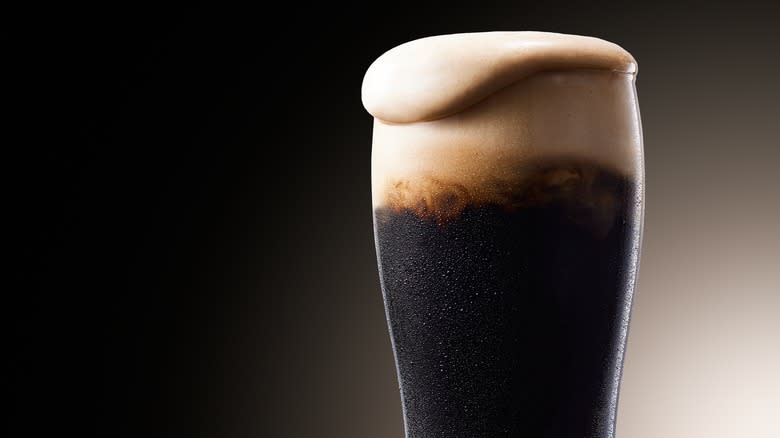
A stout was originally a type of porter called a stout porter, which meant it was stronger than usual. This wasn't unique to porters as it was typical for any beer over 7% ABV to be labeled as a stout. The transition from a subcategory of porter to a fully-fledged beer style in its own right was likely a gradual one as there's no definitive historical moment we can point to as the birth of the stout.
It didn't take long for this early prototype to arrive once the porter was created — there are records of stout porters being sold in the 1700s as well. As with porters, stouts are a global beer style, but you will more often see stouts being associated with Ireland since that's where most of the drink's history played out.
As with porters, there are several different types of stouts. Guinness is famous for its classic dry Irish stout (though it's far from the only type of beer Guinness makes). Then, you have oatmeal stouts, milk stouts, imperial stouts, and pastry stouts. There are even stouts made with real oysters called oyster stouts. Generally speaking, stouts share a similar flavor profile to porters with notes of chocolate, coffee, and caramel and have a rich black or dark brown color.
Porters Use Malted Barley
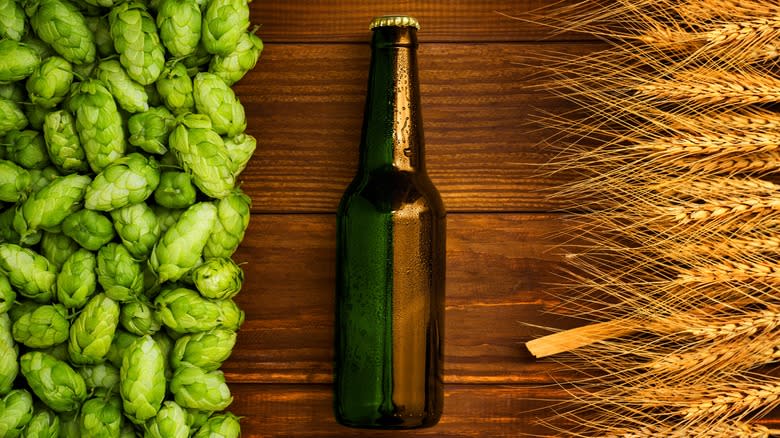
The traditional distinction between porters and stouts is the use of malted or unmalted barley. Historically, porters have been made with malted barley, which is typical for light beers as well. The difference between dark and light beers is that breweries will roast the barley before fermentation for the former. The roasting process isn't all that dissimilar to coffee roasting, which could help explain the strong coffee notes you get with porters and stouts.
Stouts traditionally use unmalted roasted barley. It's not entirely clear why the first stout brewers would have done this since malted barley is such a core feature of brewing beer but it likely had something to do with avoiding taxes. By using unmalted barley, brewers could avoid hefty beer taxes being levied against them since the product no longer fit the description of a porter.
However, this development wouldn't come until later in these two beers' history. When stouts were still called stout porters, their ingredients would have been identical to a regular porter but with less water, resulting in a more concentrated beer with a higher alcohol content. A thorough exploration of the different malts used for these beers would require more time than we have here, but you can identify different time periods when different grains (such as black malt or brown malt) were more popular. While malted or unmalted is a good guideline, today, there are examples of both that cross that boundary, so the distinction isn't exactly airtight.
Stouts Have A Bolder Flavor
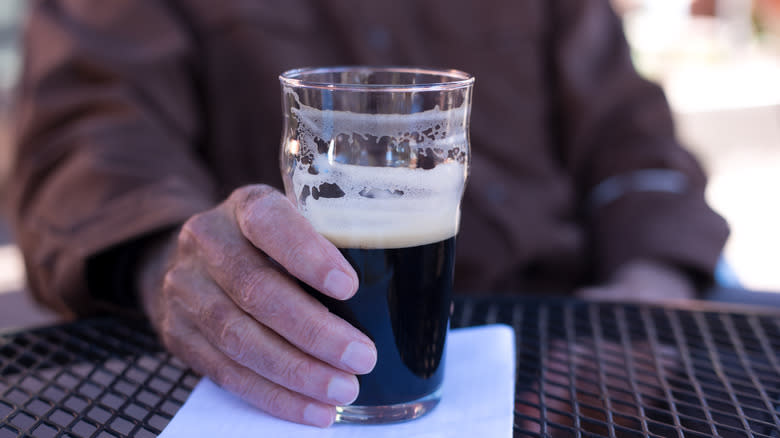
This is another example of something that is generally true but easily contradicted when you narrow in on specific examples. The very first stouts would have easily been bolder thanks to being essentially concentrated porters. But even as the recipe changed, the reputation for stouts being bolder has not.
More than the ingredient list, the difference in flavor is what's going to help you identify a porter versus a stout. Stouts have a bigger body, which translates to a thicker mouthfeel and a creamy texture, whereas porters come across as relatively thin. Some porters are so light and crisp that it's almost startling since, at this point, we often expect our dark beers to be as heavy as molasses. The density of stouts is what makes them a great beer style for winter, whereas porters are more versatile.
Of course, exceptions will apply. The classic Guinness is a stout that's notoriously thin for the genre, though it still has some heft to it. Guinness is also only 4.2% ABV which is quite a bit lower than your typical stout. If you were asked whether a dark beer with 4.2% ABV was a porter or a stout, your money would usually be better off on a porter since they average between 4% and 7% whereas stouts tend to hover around 6% to 8%, though again, both imperial porters and imperial stouts break that mold by going even higher.
Read the original article on Tasting Table


